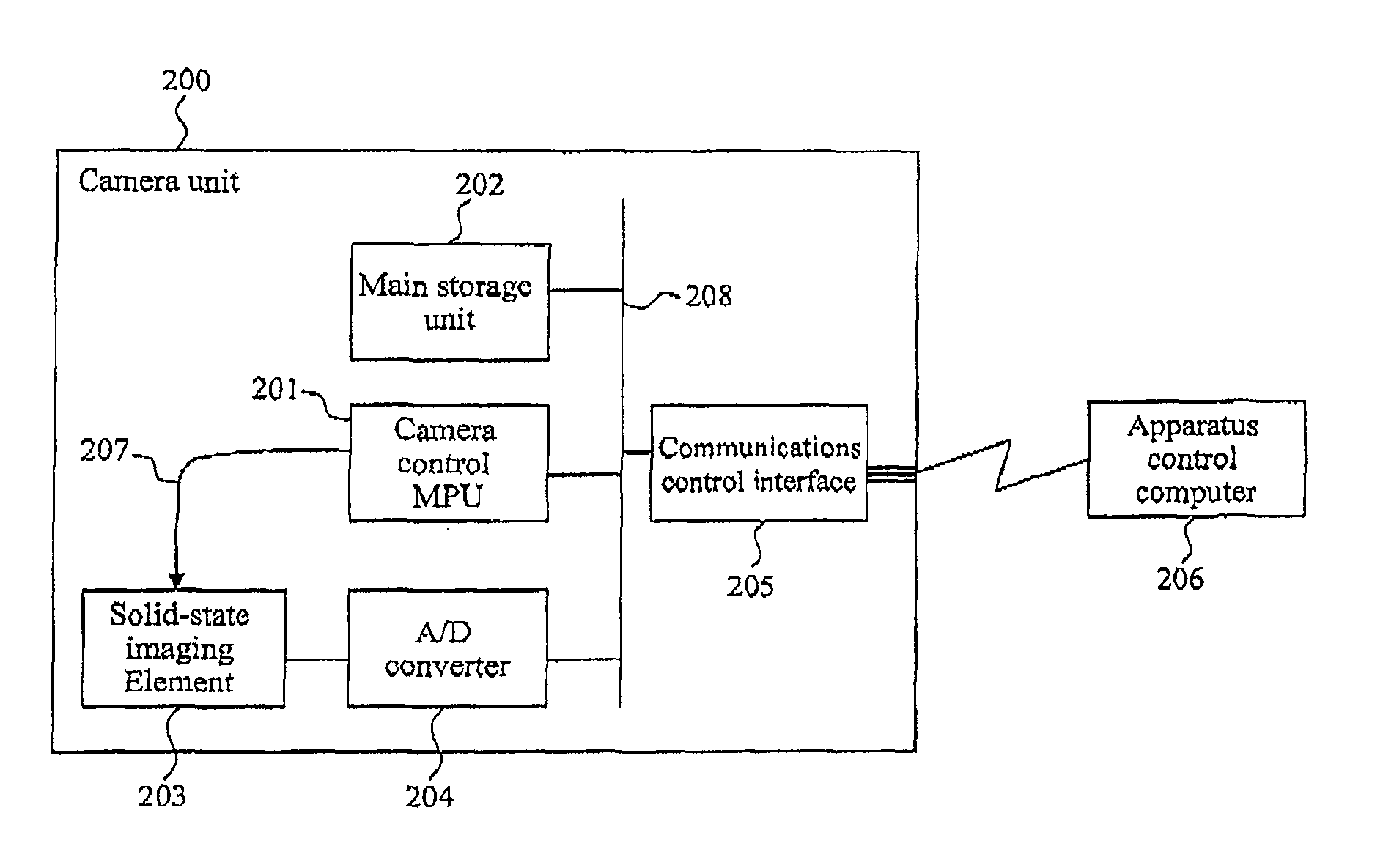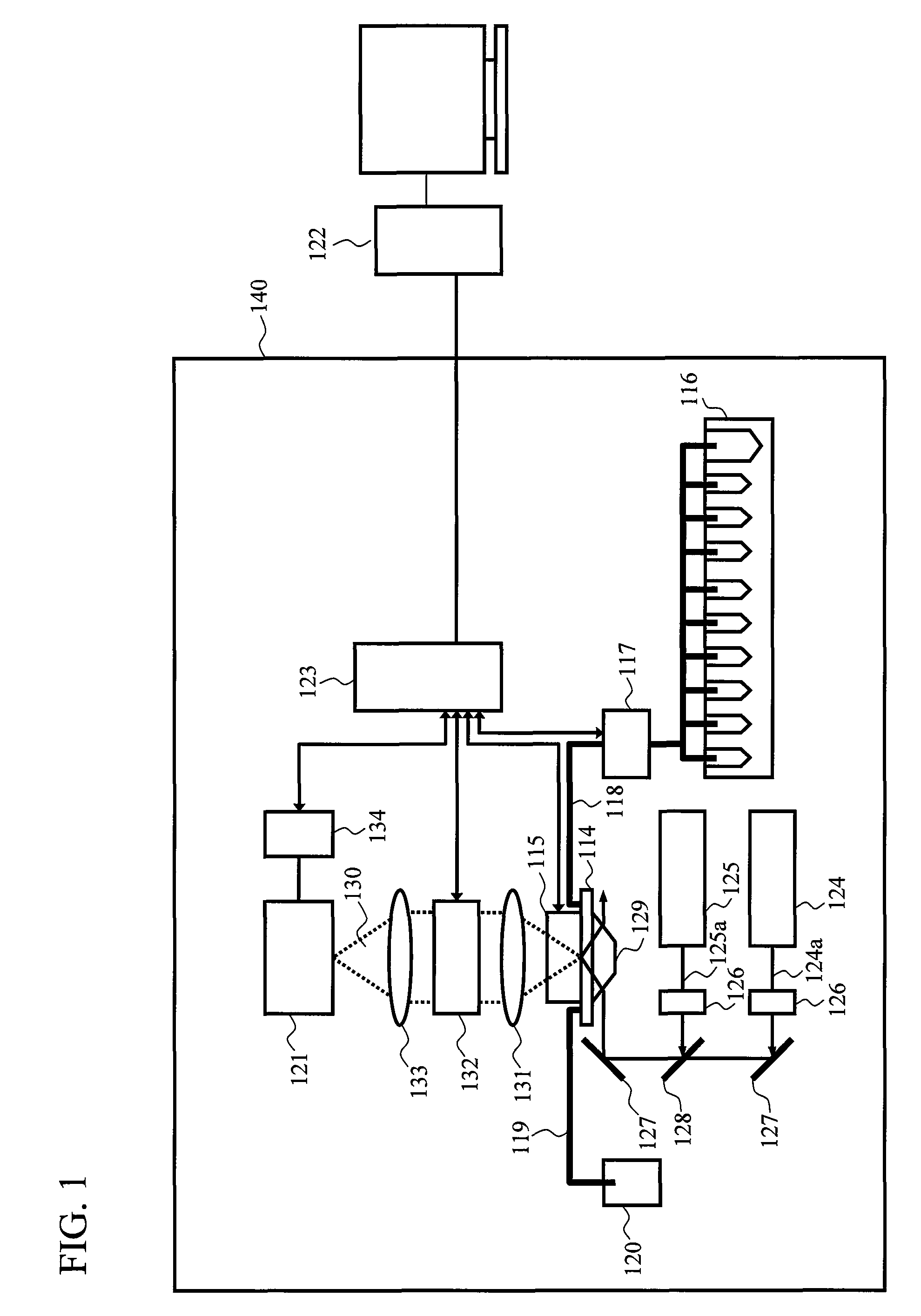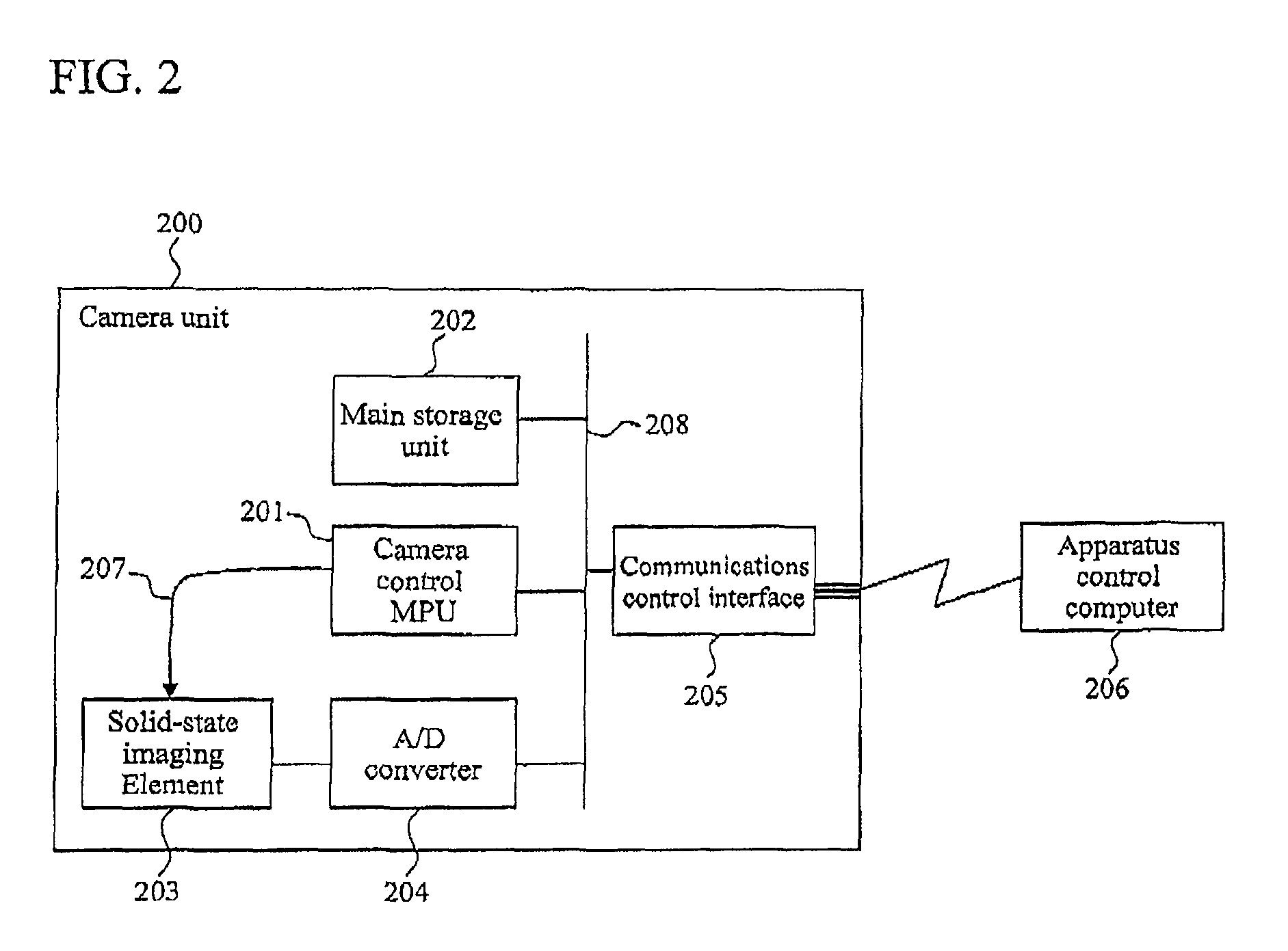Nucleic acid analyzing apparatus
a technology of nucleic acid and analyzing apparatus, which is applied in the field of nucleic acid analyzing apparatus, can solve the problem that the density of pixels cannot provide high accuracy, and achieve the effect of high accuracy in analytical ability
- Summary
- Abstract
- Description
- Claims
- Application Information
AI Technical Summary
Benefits of technology
Problems solved by technology
Method used
Image
Examples
first embodiment
[0148]A schematic configuration of a single molecule DNA sequencer as a nucleic acid analyzing apparatus according to the first embodiment is shown in a block diagram of FIG. 1. The present exemplary apparatus is a system based on plasmon resonance and includes an analyzer 140 and analyzing computer 122. Reaction in a reaction device 114 is observed by a two-dimensional sensor camera 121. The reaction device 114 is an optically transparent substrate, on which metal structures are placed in a grid arrangement. The metal structures are, for example, pairs of gold structures juxtaposed to each other or conical gold structures. Nucleic acid probes are fastened between each pair of metal structures or at the tips of the cones. Grooves or the like are cut in inner surfaces of a temperature control unit 115 to form a reaction chamber when the reaction device 114 is mounted. The reaction chamber holds a reaction solution on a surface of the reaction device 114 and the nucleic acid probe can...
second embodiment
[0173]With the nucleic acid analyzing apparatus according to the first embodiment, all images containing a background and noises are captured, charge / voltage conversion and A / D conversion of all pixels are carried out, and all resulting data is transferred to the computer while shooting is continued during all hybridization, and thus the first embodiment is useful when pixel count is relatively small.
[0174]On the other hand, to allow for higher-quality images and longer light-emission observations, a second embodiment supports data processing capacity and image transfer capacity of a computer as high as tens of frames per second. This takes into consideration not only loads on the computer which performs a series of processes including the process of distinguishing bright-spot information in such heavy data volumes, but also loads on a transfer path used subsequently to transfer the information.
[0175]Thus, the second embodiment is intended to improve image processing speed and image...
third embodiment
[0191]In addition to a feature of the second embodiment, i.e., the feature of selectively collecting only necessary fluorescent bright spots, a third embodiment has the feature of summing bright-spot luminance values.
[0192]The third embodiment is intended to provide clearer images based on the second embodiment intended to speed up data processing.
[0193]The second embodiment makes it possible to collect a bright-spot luminance value from a targeted pixel quickly and easily. On the other hand, in applications to analyzing apparatus on which the present invention is focused, it is important to be able to easily distinguish content of images used for observation on a reaction device.
[0194]Thus, by advancing a conventional technique in the field of camera systems, namely, a binning technique which increases apparent sensitivity by adding up electric charges of a solid-state imaging element, the present embodiment uses a method for summing arbitrary predetermined areas on the imaging ele...
PUM
 Login to View More
Login to View More Abstract
Description
Claims
Application Information
 Login to View More
Login to View More - R&D
- Intellectual Property
- Life Sciences
- Materials
- Tech Scout
- Unparalleled Data Quality
- Higher Quality Content
- 60% Fewer Hallucinations
Browse by: Latest US Patents, China's latest patents, Technical Efficacy Thesaurus, Application Domain, Technology Topic, Popular Technical Reports.
© 2025 PatSnap. All rights reserved.Legal|Privacy policy|Modern Slavery Act Transparency Statement|Sitemap|About US| Contact US: help@patsnap.com



